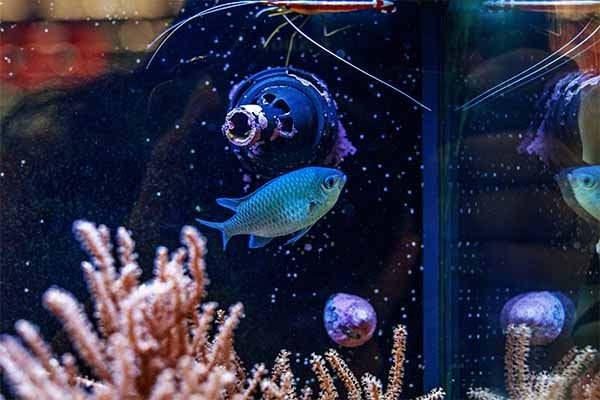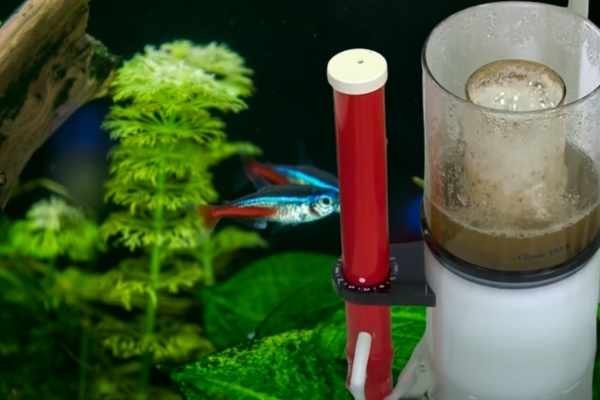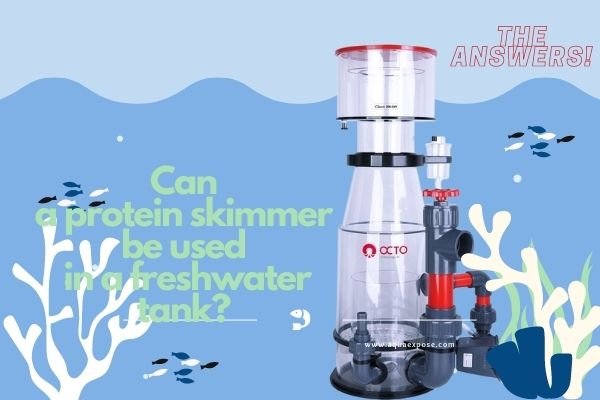How To Increase Oxygen In Fish Tank?

What does your fish need to survive? Clean water, nutritious food, and? Yes, oxygen to breathe. Just like humans, fish need oxygen to survive too. So it’s crucial that you supply an adequate amount of oxygen for your fish. But, how to increase Oxygen in fish tank? Let’s tackle the issue of low oxygen in your tank completely.
Now you might think, we get oxygen from plants, so how do fish get oxygen underwater? Well, in some cases, fish also get oxygen from the plants you have in your tank. But mostly, they depend on oxygen from the atmosphere around us. But that needs some sort of help from your side.
At certain times, the oxygen level in the tank decreases for various reasons, such as if you have too many fish in your tank, you are using oxygen-reducing chemicals in the tank, you are keeping your heavily planted tank in the dark, etc. No matter the reason, you will need to increase the oxygen anytime there’s a reduction.
So how to increase oxygen in fish tanks? Let’s discuss the ways of increasing oxygen in aquariums in detail.
Oxygen Source For Fish
Your fish get essential oxygen from the atmosphere around them rather than from the water. It might seem counterintuitive given that water usually contains oxygen, but that isn’t the case. The reason behind this is that the oxygen and hydrogen that make up the water are indivisible, so your fish won’t be able to retrieve the oxygen they need to live.
On the other hand, fish get their oxygenation from the tanks’ water surface, where gaseous exchange occurs. When carbon dioxide from the water exchanges places with oxygen from the air, this gaseous exchange occurs. Because fish take in oxygen and exhale carbon dioxide, this exchange is a useful and ongoing transaction.
Why It’s Needed To Increase Oxygen In A Fish Tank?
Fish breathe oxygen by picking it up from the atmosphere and leaving carbon dioxide in the process, just like humans. So the reduced oxygen breathed by the fish needs to be resupplied to the aquarium water so that the fish get enough oxygen to continue this breathing process.
As the fish breathes, the oxygen level continuously decreases, so you need to increase the oxygen level to balance the decreased amount of oxygen. Only then will your fish not suffer from a lack of oxygen and die.
Signs Of Low Oxygen In The Tank
There will be a lot of visible signs to let you know when your fish tank is going through an oxygen cruise. The most prominent sign will be the fish’s behavior itself. Look out for the following signs to know:
Gasping Fish
When you see the fish in your aquarium gasping for oxygen while rising to the surface of the water, it is a dead giveaway that your tank is deficient in oxygen. This might confuse you if you have a fish tank full of betta fish who always like to swim above to get oxygen.
But if you notice most fish rising to the water’s surface, or if a few species of fish frequently rise on the surface, and they seem to gulp for oxygen, it’s a strong indicator that the aquarium’s oxygen concentration is low.
Reduced Fish Movement
Keeping an eye on your fish’s movement can indicate whether they lack oxygen or not. If you find your fish are moving around less, such as swimming less or swimming slowly, it could be due to a lack of oxygen in your tank.
Consuming Less Food
If you observe that almost all of the fish in the tank are consuming less food, this might indicate that the tank is suffering from a lack of oxygen.
Panting Fish
If you see that the fish are panting rapidly and their gills are moving more quickly, it’s a warning that the fish are suffering from low oxygen levels.
10 Ways Of Increasing Oxygen In The Tank
There are many ways of increasing the oxygen in the tank. However, it doesn’t mean you need to worry about how to increase oxygen in fish tanks. Because they all are fairly easy. Some of the ways are explained below:
1. Using Air Pump
Every time you ask someone how to increase oxygen in fish tank? You will probably be suggested to buy an air pump. To guarantee proper airflow in the aquarium’s water, you’ll need an air pump. It can serve as a filter and even a system for additional gas exchange, adding more oxygen to your tank. The operation of certain filter systems even necessitates the use of air pumps. In a nutshell, air pumps provide a range of functions.
The main contribution of the air pump to increasing the oxygen level is that it helps increase water movement and increase surface agitation. And if you don’t know already, surface agitation increment is a major part of oxygen increment. Will be discussed details of surface agitation below.
When the air bubbles made by the air pump reach the surface and burst, this causes the surface tension to break and draw in oxygen. Also, water movement will help the gained oxygen reach every corner of your aquarium, which will deprive no spot of oxygen.
2. Using Fountain
Fountains are great options if you want to increase the oxygen in your tank. The spray of water will increase water-air contact and airflow, which, as mentioned before, will help increase oxygen levels.
3. Using A Power Filter
Power filters can also be used to oxygenate an aquarium without the use of a pump. Water flowing around your aquarium gathers oxygen as it passes through. The oxygen molecules are then added to your aquarium’s total oxygen level.
Water dripping through a power filter improves the likelihood of additional oxygen atoms being added, as it creates more water flow. This additional oxygen will ultimately be placed in an aquarium for your fish.
Water coming out of the filter would also cause considerable surface molecule agitation. It’ll also allow particles to be released, which the fish can use. Water will interact with the atmospheric gas as it moves across the surface, causing oxygen to be absorbed.
4. Using Living Plants
Adding extra plants to the aquarium is a simple way to adequately oxygenate it because plants are a great source of oxygen,
Make sure you choose plants that can consume carbon dioxide rather than absorb it in order to generate oxygen. The necessity for high water movement will be lessened if you arrange enough oxygen-producing species of plants around the aquarium.
And when the lights are turned off, plants create less oxygen. You’ll need to either lower the number of plants inside the aquarium at night or ensure the tank is always lit. You’ll need to change the plants you put in aquariums based on the sort of fish you’re keeping in the tank.
5. Increasing Surface Agitation
Simply put, surface agitation is the water’s movement on the surface. These water movements at the surface level initiate the gaseous exchange. It means carbon dioxide from the water is expelled into the air, and oxygen from the air is absorbed into the aquarium water. When external oxygen hits the water, it breaks and raises the tank’s DO (dissolved oxygen level) levels.
So, this surface agitation is needed to exchange carbon dioxide emitted by the fish with fresh oxygen from the atmosphere. Now we will know some ways of increasing surface agitation:
6. Installing HOB Filter
Hang On Back or HOB filters sit on top of the tank, which you can hang at the back end or sides of the tank, and are fantastic for boosting contact between air and water. The water is first filtered in the HOB, then cascades back from the Hob into the aquarium, aerating the water in the process.
The water movement through hob filters helps increase the surface agitation, which means the chance of oxygen being collected from the water increases. These filters also circulate water in the tank and ensure that oxygen is distributed throughout the aquarium.
7. Spray Bottle
Adding a spray bar is a great way to boost levels of dissolved oxygen. It is a spray tube that connects to the output port of the canister filter. This equipment agitates the surface of the tank’s water by sprinkling water equally all over the tank’s surface from a height.
Consequently, as the water travels through the aquarium, it comes into contact with the air, allowing more oxygen into the system. A canister filter package comes equipped with a spray bar. But if your bought canister filter doesn’t come with one, you should install one for better oxygenation.
8. Powerhead
You can also utilize a powerhead if the filter you installed isn’t disrupting the surface or creating enough agitation. A powerhead draws water from the tank and blends it with air before releasing it. Most of the powerheads will allow you to control the amount of air they take in, allowing you to control how many air bubbles are produced.
These can also be used to eliminate dead spots inside the aquarium, which are areas with poor water circulation. A strategically placed powerhead will help circulate air in certain parts of your tank.
Larger aquariums are frequently under-aerated due to filters, aeration stones, and decorations. As a result, for larger tanks, this is frequently the favored method. Nevertheless, powerheads in small and medium aquariums can easily generate excessive current, so choose one suited for small tanks and has a customizable flow rate.
9. Aquarium Bubblers
Aquarium bubblers use an airline to connect to the air pump. I need not say you will need an air pump to operate these. Various kinds of air bubblers also function differently.
Air stones, for example, are placed beneath the pebbles or linked to ornaments like treasure chests or fake houses. The treasure chests are opened by the force and streams created by the bubbles. This bubble then flows up to the surface and pops, which increases the surface agitation.
10. Wavemaker
Even though some users think that a wavemaker is different than a powerhead, they’re similar, but they’re not identical. This is just another effective option for agitating the surface of the water.
The Wavemaker creates waves in the tank, similar to those seen in the seas or even oceans, but small. This addition helps supply oxygen to tank water by creating movement.
Aerate Aquarium Without Air Pump
Aerating is an important part of the aquarium hobby. Because without aeration, your fish will be most likely to suffer from low oxygen levels. Even if you manage to get oxygen in your tank, every point in your aquarium might not be oxygenated without aeration. Simply put, aeration means the distribution of oxygen throughout the tank.
For properly aerating your aquarium, you don’t need an air pump. You have already seen some of the equipment that helps in aerating the tank’s water. Here are a few more.
- Use a cup or container to pour water into the aquarium from high above. This is known as the “cup method,” which helps aerate the water in your tank.
- You can use spray bars that have added filters. This sprays water in your tank, creating more aeration in the process.
- You can use various ornaments that move or float, which will also increase aeration.
- You can also choose fish that swim on various levels of the tank. It also helps with water movement, which results in aeration.
How To Maintain The Oxygen Level In Aquarium?
Your job as an aquarium owner doesn’t stop at increasing the oxygen level. You also need to take steps to maintain the oxygen level. Here are the things you need to do to maintain your oxygen level:
Avoiding Certain Chemicals
Using particular treatments, chemicals, and substances in your aquarium, like water conditioners, could significantly affect the oxygen-carrying capacity of the water.
Carefully check the labels and ingredients on any product and follow the quantity size guidelines to avoid contaminating your water and reducing its oxygen-carrying ability.
Controlling Water Temperature
Cooler water, contrary to popular belief, has a higher oxygen content than warm water. So, if the temperature of the water rises, less oxygen will be available in your aquariums.
To prevent this, keep your aquariums facing the direction of the sun, particularly in summer weather. Also, consider turning off the heater. If the water temperature rises more than one to two degrees, you can use ventilation to adjust the temperature to a much more tolerable level.
If the temperature rises, pack a few ice cubes in the bag and gently drop them into the water. The ice will help stabilize the warm water. Avoid putting ice directly in the water.
Taking Care Of Plants
According to the fishkeeping community, taking care of the plants you have in your aquarium is essential for aquariums because this source of oxygen can mess up your filtration system if not taken care of properly. Plant decay is involved in ruining biological filtration. Not only that, they will only provide you with oxygen if they are provided with adequate lighting.
Also, as plants absorb oxygen and emit carbon dioxide at night, it means that a longer duration of darkness may decrease the oxygen supply. So you have to make sure that they are not spending too much time in darkness.
Correctly Stocking The Aquarium
This may appear to be an unusual method of increasing and maintaining oxygen levels in the tank, but it is completely logical.
Because each fish you bring to the tank requires a certain amount of oxygen to breathe, if you are adding more fish, you’ll need more oxygen. Overcrowded tanks are unable to meet the oxygen requirements of every one of their residents.
Increasing Oxygen In Emergency Cases
If you see your fish gasping at the surface for oxygen at that time, there will be no time to investigate the source of the issue; you can do it when the fish aren’t in any danger. Your main focus right then will be to save your fish.
You should act quickly if you see the oxygen content is dangerously low after using a dissolved oxygen test kit. The simplest and fastest way to introduce oxygen to the tank is to execute a serious water change, up to half water change, right away.
The additional water will offer dissolved oxygen to your fish, which should keep them happy for the time being. The dechlorinated new water will effectively and quickly change the low oxygen levels. Also, if this water change could be done with the cup method, it would be more fruitful.
The cup method will help the water movement and allow the oxygen to reach every filter spot. But always make sure the water you are pouring into the aquarium matches the water temperature inside. Otherwise, your fish will go into a shop because of the sudden temperature difference.
Frequently Asked Question
Q: How much oxygen do my fish need?
The dissolved oxygen consumed by aquatic creatures varies depending on breed, size, weather, the interval of feeding, physical movement level, and other aspects. On average, adult fish consume about 200 to 500 mg of oxygen per kilogram of fish per hour.
Q: Will too much oxygen hurt my fish?
Excessive oxygen levels in the water will cause lethal gas bubble illness, which causes blisters in the fish’s body or around the eyes when gas escapes from the solution and enters inside the fish.
Q: Is it necessary for me to leave my bubbler on at night?
Unless you’re utilizing CO2 injections, there’s no benefit and no damage from air bubbles. They’re just for show. However, if you keep a non-CO2 tank, you should not use a bubbler at night since you need to store enough CO2 from the fish, even at night, to give the living plants a good start the following morning.
Final Verdict
Now you have all the knowledge you need on how to increase oxygen in the fish tank. It goes without saying that, depending on your aquarium settings and the inhabitants of your tank, you may need to switch between these options from time to time. Either way, you will be able to increase the oxygen level in your tank.
And where air pumps work better in terms of increasing oxygen if you play it smart and incorporate two or three of the methods mentioned above together, your chance of having a better-oxygenated tank increases.
For instance, you can use a filter that will not only increase water movement but also clean your tank’s water with a fountain, which will increase water flow and create a nice-looking tank.





